11 Vintage Federal Glass Company Patterns That Collectors Prize
Federal Glass remains a favorite among collectors who appreciate vintage craftsmanship. The company produced a wide range of tableware that once filled homes across America. Over time, these glass patterns became prized collectibles for their beauty and history. Their soft hues and detailed etchings offer a nostalgic look back at classic American style.
This post may contain affiliate links, which helps keep this content free. Please read our disclosure for more info.
Federal Glass Patrician Spoke Pattern

The Patrician pattern, often called Spoke, was produced between 1933 and 1937. This design is easily recognized by its sunburst center surrounded by radiating lines. Collectors appreciate its delicate amber hue and geometric beauty that fits any vintage table setting. A single dinner plate can sell for about $15 to $25, while full sets may reach over $150. It remains one of the most admired Depression-era designs by Federal Glass.
Produced during the Great Depression, Patrician glassware offered affordable elegance for American homes. The pieces include dinner plates, bowls, tumblers, and serving dishes, each showing detailed pressed work. The amber color adds warmth and character to any collection. Many collectors seek this pattern for both its artistry and historical value. Its sturdy yet graceful design keeps it popular among glass enthusiasts today.
Federal Glass Sharon Cabbage Rose Pattern
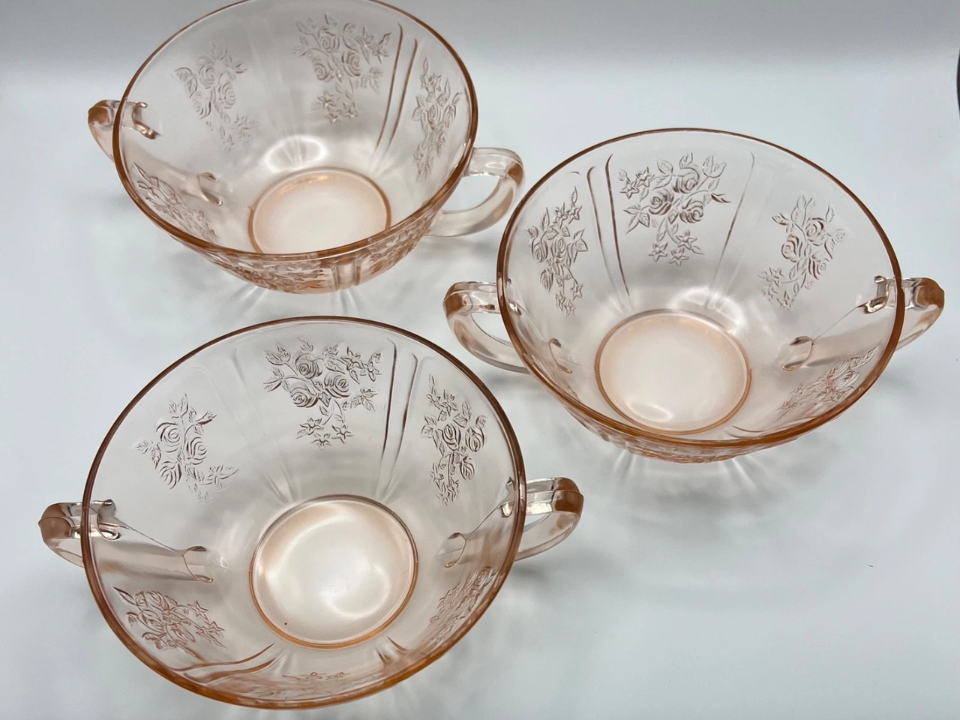
The Sharon pattern, also known as Cabbage Rose, was made from 1935 to 1939. It features a beautiful floral motif that adds a soft, romantic touch to vintage tables. The pink version is especially prized by collectors, though clear and amber pieces are also found. Individual pieces often range from $10 to $40 depending on condition. Its gentle pattern and Depression-era charm make it a frequent favorite among glass lovers.
Collectors often highlight Sharon for its graceful embossed roses that reflect light beautifully. It was one of Federal Glass’s most feminine and decorative lines. The smooth texture paired with raised blooms gives it an elegant contrast. Matching sets, particularly in pink, can fetch a premium among collectors. This pattern perfectly captures the mood of 1930s American glassware.
Federal Glass Madrid Pattern
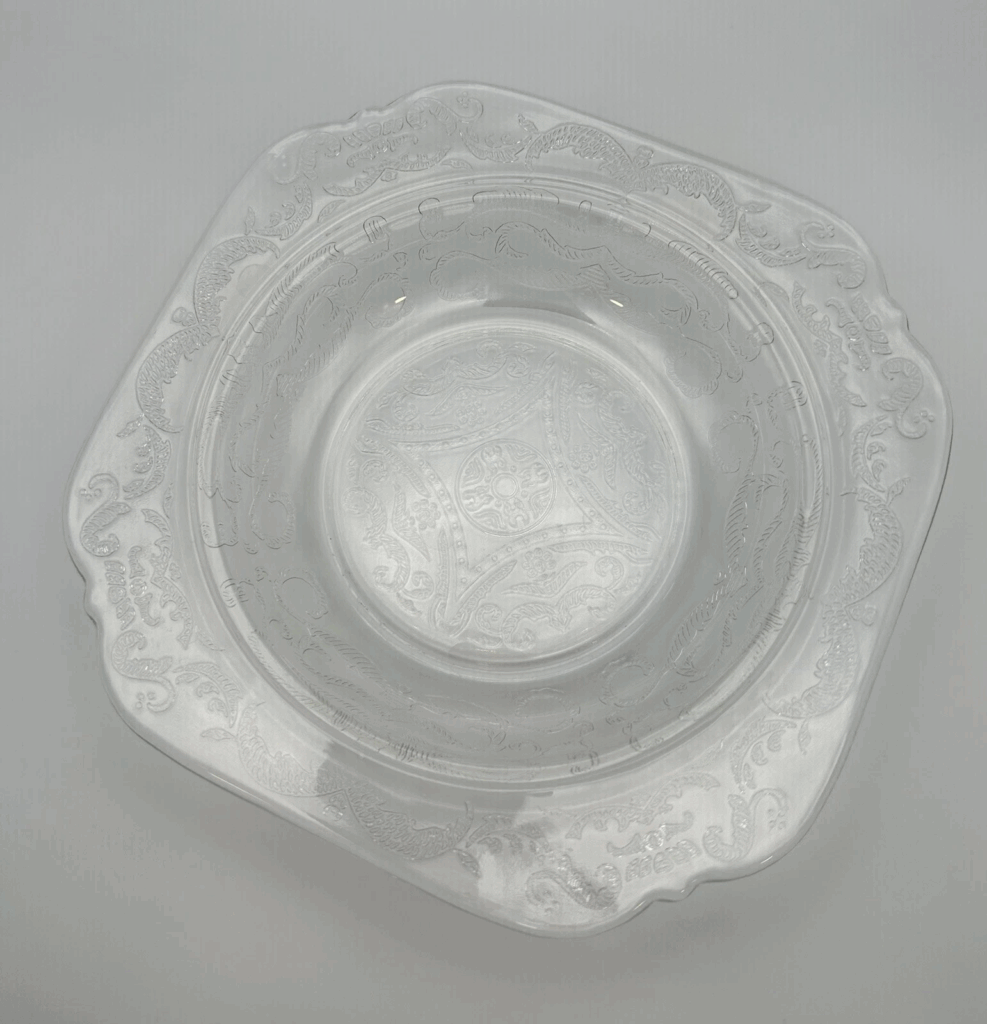
The Madrid pattern was made between 1932 and 1939 and is one of Federal Glass’s most recognized designs. It showcases a repeating scroll and diamond motif that adds rich detail. Available in amber, pink, and clear varieties, it appeals to both new and seasoned collectors. Individual dinner plates usually sell for around $15 to $30, with full sets reaching up to $200. The pattern’s balanced design and craftsmanship make it a timeless favorite.
During its production years, Madrid was admired for its durability and elegance in everyday use. Collectors value how easily the pieces mix with other Depression glass collections. The scrollwork feels both classic and versatile for display or dining. Its amber color is particularly popular due to its warm, golden glow. Many collectors see Madrid as a symbol of Depression-era artistry and resilience.
Federal Glass Colonial Pattern

Introduced in the 1940s, the Colonial pattern features bold ridges and a sturdy shape ideal for daily use. Federal Glass created it during the post-Depression years when glassware regained popularity. It often came in clear or soft pastel colors that appealed to mid-century homes. Individual pieces sell for about $10 to $20, with larger serving items fetching around $50. The design’s strong lines give it a simple yet eye-catching appearance.
Collectors often mention the Colonial pattern for its blend of function and beauty. It represents a shift in American glassmaking toward practical elegance. The thick glass construction made it ideal for family dining. Each piece reflects the charm of mid-century domestic life. This pattern remains a steady favorite for those who appreciate sturdy, attractive glassware.
Federal Glass Heritage Pattern
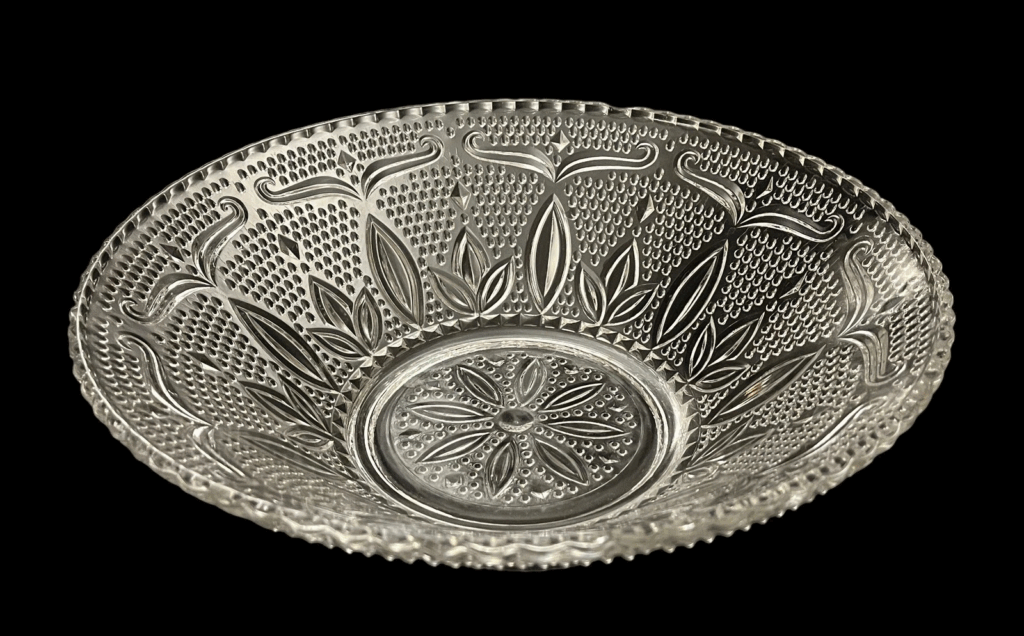
The Heritage pattern appeared during the late 1950s and became known for its clean pressed design. It was mostly produced in clear glass, giving it a sleek and refined appearance. Collectors enjoy its scalloped edges and balanced detailing that work well for both casual and formal use. Prices for individual pieces range from $12 to $25, depending on size and rarity. Many collectors find its understated design ideal for display purposes.
This pattern stands out for its adaptability in both vintage and modern table settings. The glass quality feels thicker than earlier Federal Glass works. Its simple yet charming pattern makes it perfect for everyday gatherings. Full sets remain affordable for collectors beginning their Federal Glass journey. Heritage continues to represent the company’s move toward mid-century refinement.
Federal Glass Normandie Bouquet and Lattice Pattern
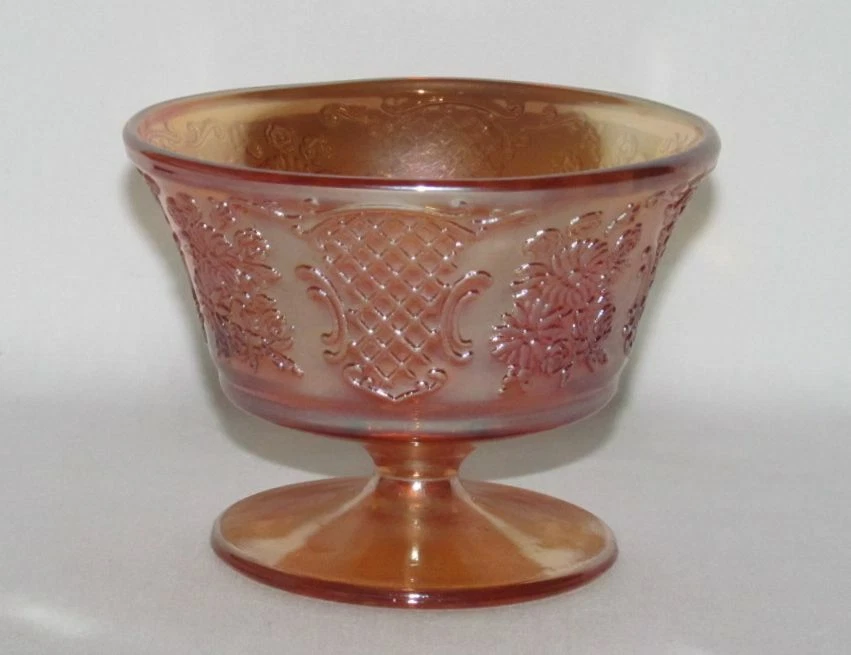
Normandie, sometimes called Bouquet and Lattice, was made between 1933 and 1940. Its floral and crosshatch design creates a gentle texture that collectors admire. The iridescent version shimmers in light, making it particularly desirable. Individual plates average around $20 to $35, while rare colors can reach over $100. This pattern remains a highlight of Depression glass artistry.
Collectors adore how Normandie balances elegance and charm with subtle detailing. The rainbow-like iridescence gives it a unique glow on display. It came in amber, pink, and green hues, each adding vintage warmth. The pressed texture and floral patterns reflect the company’s attention to form and beauty. Normandie’s vibrant presence continues to attract collectors worldwide.
Federal Glass Parrot Pattern
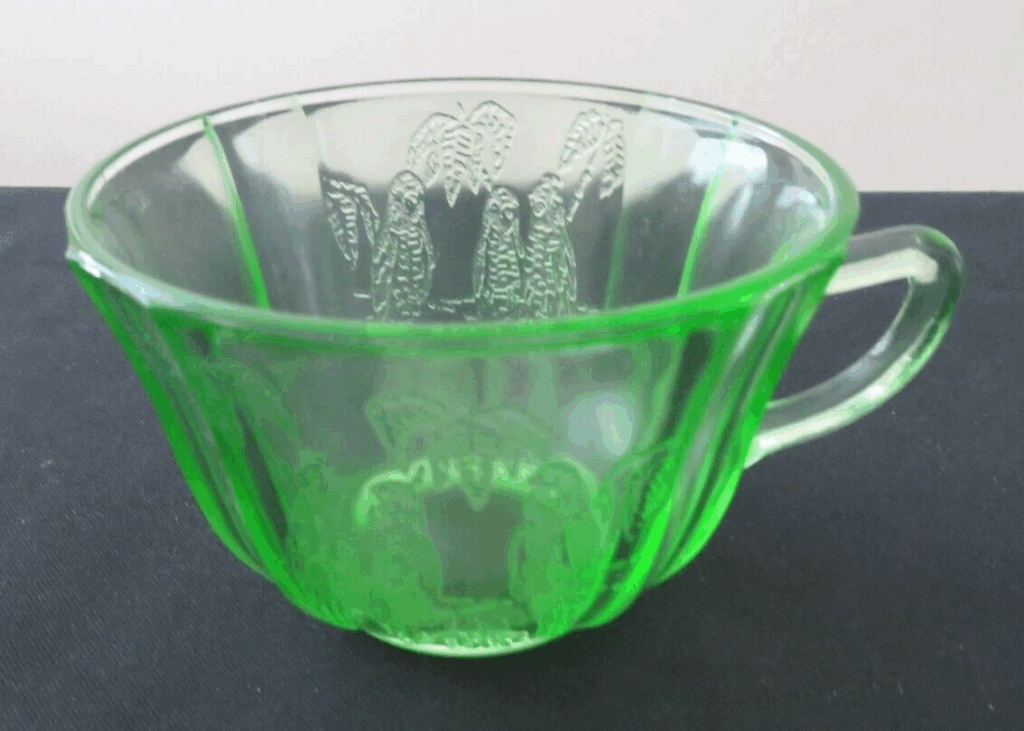
The Parrot pattern was produced from 1931 to 1932, making it one of Federal’s earlier releases. It features delightful parrot motifs surrounded by floral designs that feel whimsical and lively. Available mainly in green and pink, it instantly adds color to vintage collections. Smaller pieces like tumblers often cost around $25, while larger plates can exceed $75. Collectors treasure it for its rare design and playful theme.
What sets the Parrot pattern apart is its joyful imagery that captures a lighter side of Depression glass. It offers a rare combination of artistry and nostalgia. The embossed parrots give each piece a cheerful, almost tropical appearance. It was a short-lived design, making intact sets harder to find. This scarcity adds to its collectible value in today’s market.
Federal Glass Rosemary Pattern

Rosemary was made between 1935 and 1937, featuring gentle scrolls and floral touches around the edges. It appeared in pink and amber tones, both highly collectible today. Each piece feels refined yet simple, reflecting the design tastes of the 1930s. Individual dishes cost around $10 to $20, with serving pieces going for more. The balance between grace and usability made Rosemary a popular choice in its time.
Collectors are drawn to Rosemary’s floral charm and classic feel. The pattern’s subtle curves make it elegant without feeling ornate. It pairs beautifully with other Depression glass collections due to its versatility. Many collectors enjoy using Rosemary in vintage-inspired dining displays. Its modest sophistication continues to appeal to collectors seeking timeless designs.
Federal Glass Iris and Herringbone Pattern

The Iris and Herringbone pattern was made between 1939 and 1941 and became a post-Depression success. It features detailed iris flowers framed by a herringbone texture. Produced in crystal, marigold, and iridescent finishes, it appeals to a wide range of collectors. Individual pieces can range from $15 to $50 depending on color and condition. It is prized for its light-catching texture and graceful floral design.
Collectors often admire the way this pattern combines texture with natural motifs. The raised flowers stand out beautifully against the lined background. It is especially sought after in iridescent form for its shimmering glow. Many collectors use it as a display centerpiece due to its reflective qualities. The design perfectly bridges Depression glass and post-war style trends.
Federal Glass Diana Pattern
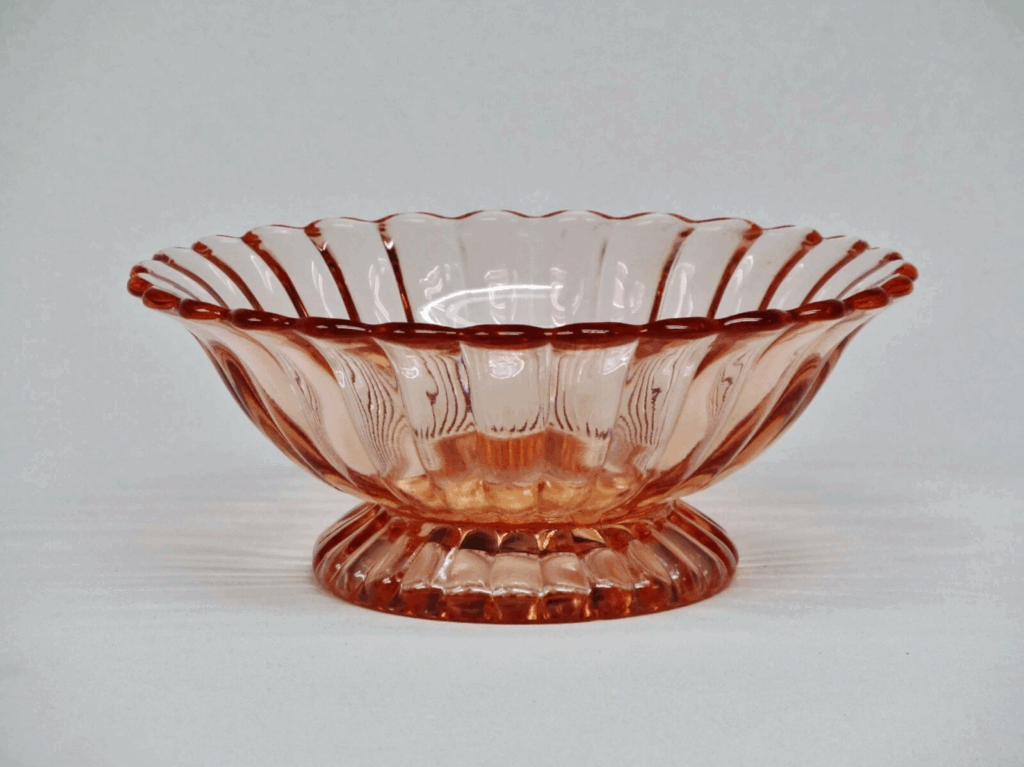
The Diana pattern appeared in the 1940s and was known for its scalloped rims and paneled sides. Federal Glass designed it for both elegance and durability. Available in clear and pastel hues, it adds charm to both modern and vintage table settings. Collectors can find pieces priced between $10 and $30. Its clean lines and sturdy form make it an enduring favorite.
Diana represents the post-war shift toward simplicity in design. Collectors often pair it with mid-century dinnerware due to its versatility. It feels both nostalgic and practical for everyday use. Many find its reflective surface appealing when displayed in glass cabinets. Diana continues to hold steady value among collectors who enjoy timeless design.
Federal Glass Optic Pattern

Introduced in the 1940s, the Optic pattern features swirling ridges that create a sense of movement. It was often made with iridescent versions that shimmer in natural light. The curved design gives each piece a soft and fluid appearance. Individual cups or bowls can sell for $10 to $20, with larger serving pieces fetching higher prices. It is appreciated for its airy and graceful form.
Collectors find Optic delightful for its unique texture that catches the eye. The swirling lines create depth and reflection on every piece. It is versatile enough to use for dining or display. The pattern reflects a shift toward modern design aesthetics in glassmaking. Optic design continues to charm collectors looking for light, elegant patterns.
This article originally appeared on Avocadu.
